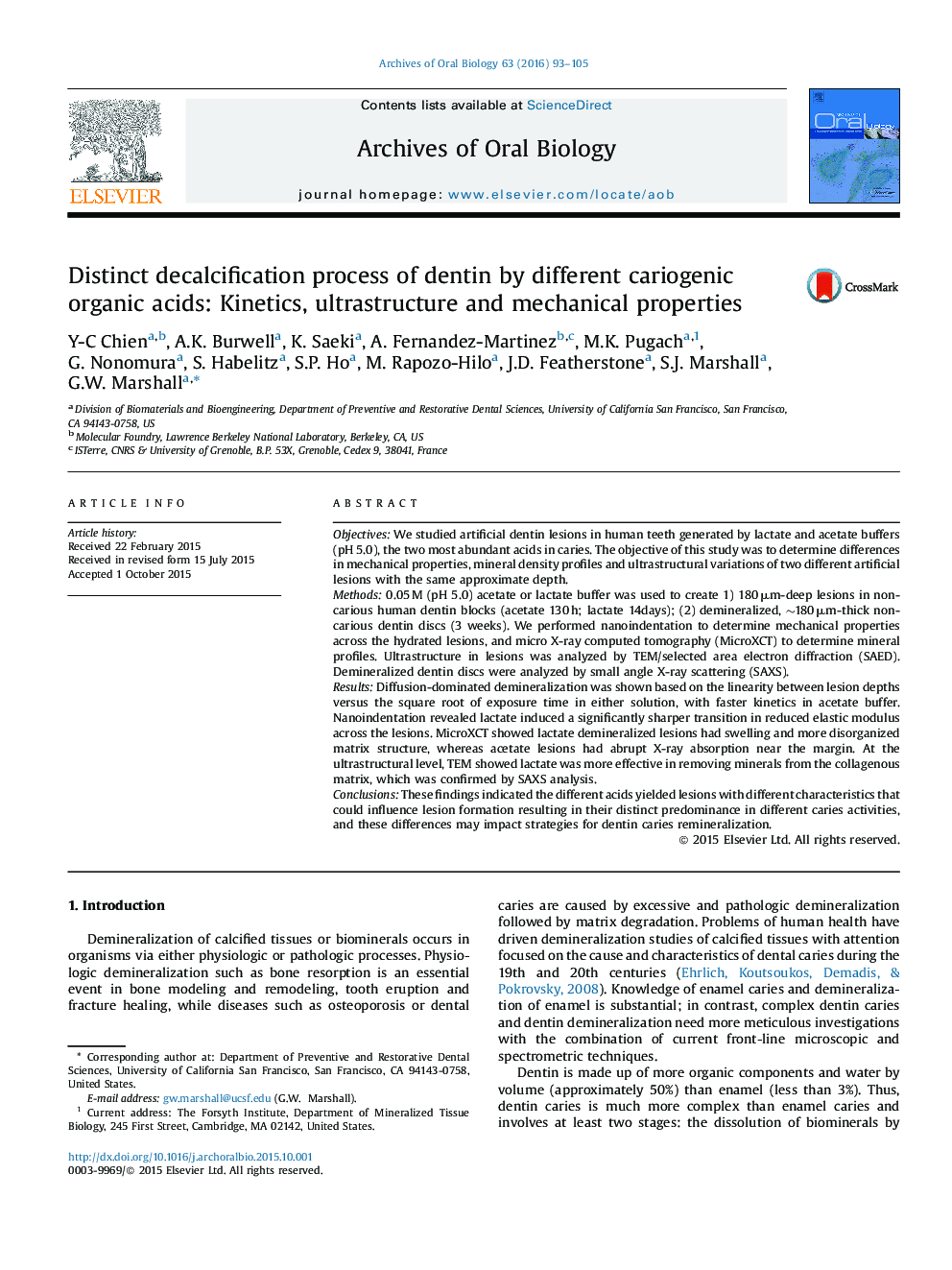| کد مقاله | کد نشریه | سال انتشار | مقاله انگلیسی | نسخه تمام متن |
|---|---|---|---|---|
| 6050765 | 1583290 | 2016 | 13 صفحه PDF | دانلود رایگان |
- Lactate and acetate buffers had different demineralization kinetics at pH 5.
- Elastic modulus of lactate and acetate demineralized lesions is similar in flat zone, but different in the slope zone.
- Ultra-structural studies show that lactate buffer removed most of the minerals in the outer/flat demineralized part of lesion.
- Acetate has faster kinetics, but left numerous residual minerals. SAXS data confirm this outcome on average.
- The most demineralized portion of lactate lesions often had swelling, suggesting removal of important matrix components. Acetate did not.
ObjectivesWe studied artificial dentin lesions in human teeth generated by lactate and acetate buffers (pH 5.0), the two most abundant acids in caries. The objective of this study was to determine differences in mechanical properties, mineral density profiles and ultrastructural variations of two different artificial lesions with the same approximate depth.Methods0.05 M (pH 5.0) acetate or lactate buffer was used to create 1) 180 μm-deep lesions in non-carious human dentin blocks (acetate 130 h; lactate 14days); (2) demineralized, â¼180 μm-thick non-carious dentin discs (3 weeks). We performed nanoindentation to determine mechanical properties across the hydrated lesions, and micro X-ray computed tomography (MicroXCT) to determine mineral profiles. Ultrastructure in lesions was analyzed by TEM/selected area electron diffraction (SAED). Demineralized dentin discs were analyzed by small angle X-ray scattering (SAXS).ResultsDiffusion-dominated demineralization was shown based on the linearity between lesion depths versus the square root of exposure time in either solution, with faster kinetics in acetate buffer. Nanoindentation revealed lactate induced a significantly sharper transition in reduced elastic modulus across the lesions. MicroXCT showed lactate demineralized lesions had swelling and more disorganized matrix structure, whereas acetate lesions had abrupt X-ray absorption near the margin. At the ultrastructural level, TEM showed lactate was more effective in removing minerals from the collagenous matrix, which was confirmed by SAXS analysis.ConclusionsThese findings indicated the different acids yielded lesions with different characteristics that could influence lesion formation resulting in their distinct predominance in different caries activities, and these differences may impact strategies for dentin caries remineralization.
Journal: Archives of Oral Biology - Volume 63, March 2016, Pages 93-105
